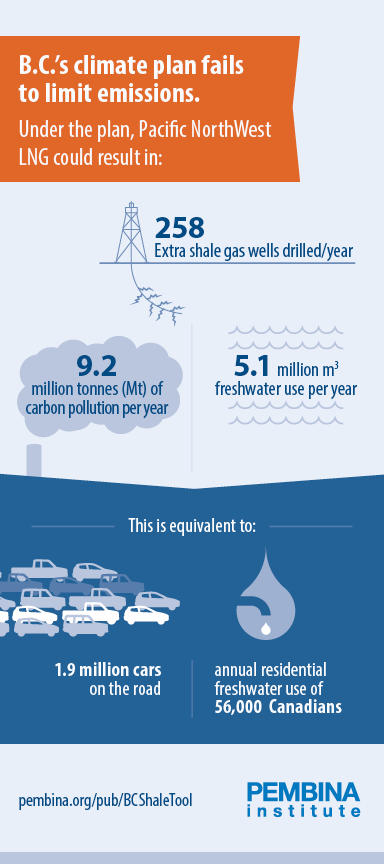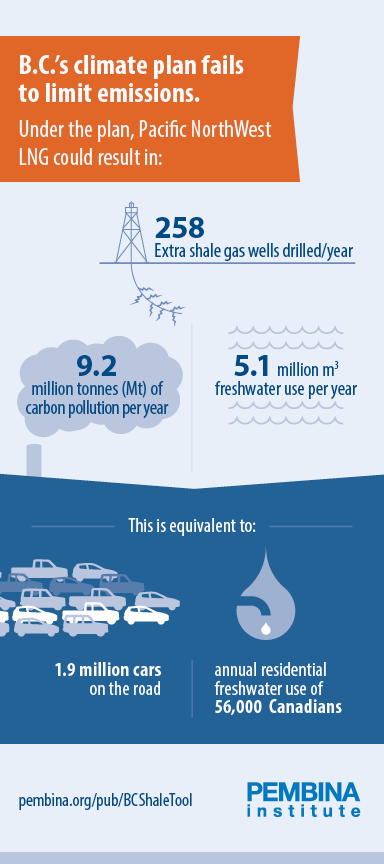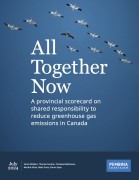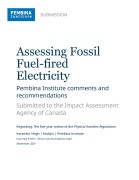The Canadian Environmental Assessment Agency is reviewing a proposal by Petronas-backed Pacific NorthWest LNG Ltd. to develop a liquefied natural gas facility and export terminal on Lelu Island, near Prince Rupert, B.C.
This infographic outlines the potential environmental impacts of the $36-billion PNW LNG project in the context of B.C.'s new climate plan, released on August 19.
The plant and its associated upstream operations could result in the drilling of 258 extra gas wells, the emission of 9.2 million tonnes (Mt) of carbon pollution, and the usage of 5.1 million cubic metres of fresh water per year.
This is equivalent to 1.9 million cars on the road and the annual residential fresh-water use of 56,000 Canadians.
The PNW LNG plant would be located in the territory of the Lax Kw'alaams Band.
The Pembina Institute created the infographic using the B.C. Shale Scenario Tool.
Implications of B.C.’s climate plan for Pacific NorthWest LNG
- Under the policies in B.C.’s new climate plan, Pacific NorthWest LNG and its associated upstream operations would become one of Canada’s largest carbon polluters if the full project proceeds as proposed.
- If built, PNW LNG will make it impossible for B.C. to achieve its legislated 2050 climate target. Carbon pollution from the project could reach 9.2 million tonnes (Mt) by 2030 and increase to 10.0 Mt by 2050. B.C.’s 2050 target is 13 Mt of carbon pollution.
- Since the B.C. government has failed to put forward a plan for LNG development that will allow the province to meet its climate targets, the federal government should reject the project. For B.C. to get back on track for its climate targets, it needs to implement the full package of recommendations from the Climate Leadership Team.
We are grateful to the Vancouver Foundation, Dragonfly Fund at Tides Canada, Real Estate Foundation of British Columbia and McLean Foundation for their support of our work.










